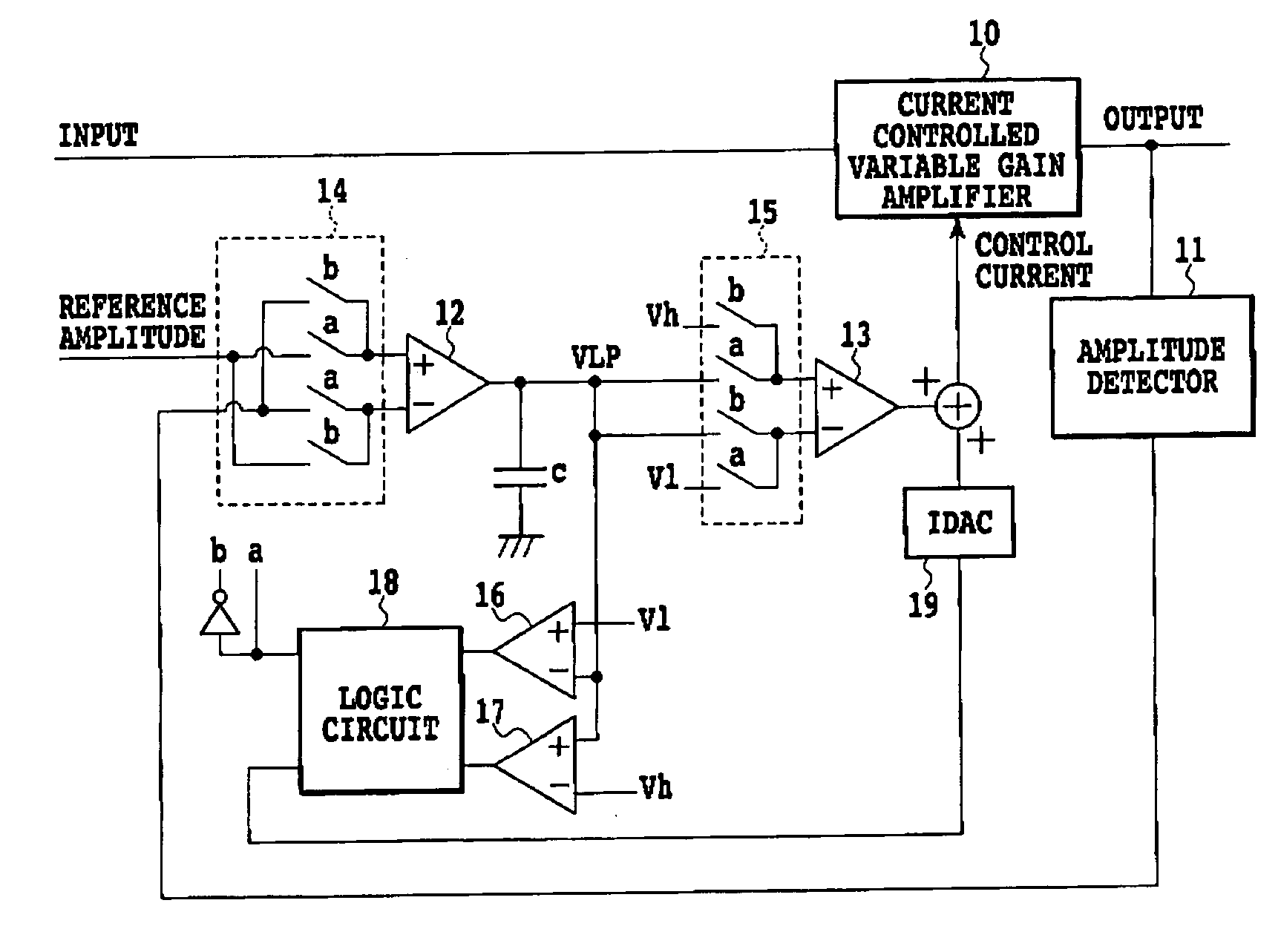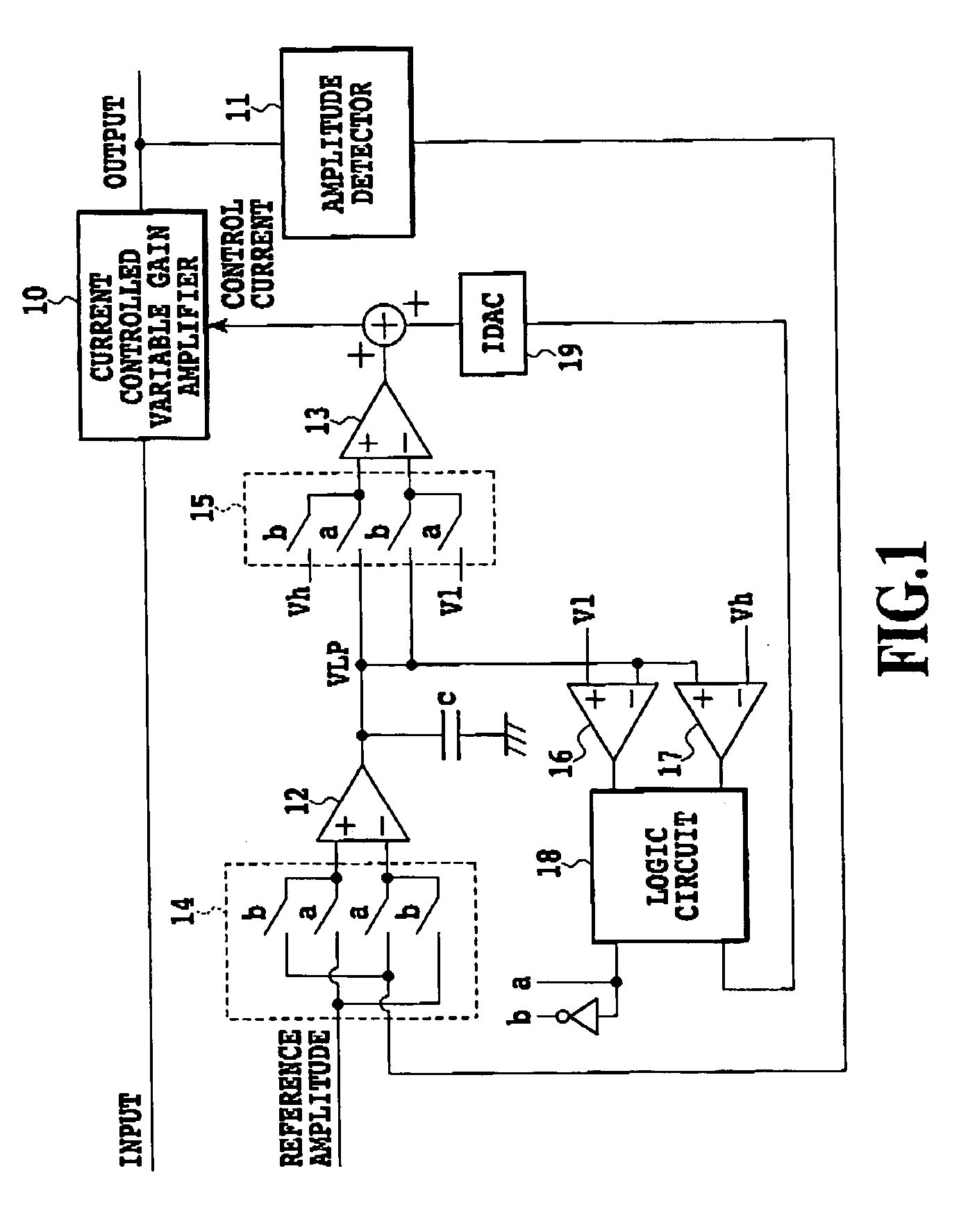Feedback control circuit
a control circuit and feedback technology, applied in the field of feedback control circuits, can solve the problems of changing the state of the system, external components such as capacitors attached to the integrator or low-pass filter, being subjected to the noise of the circuit, etc., and achieve the effect of reducing the influence of disturban
- Summary
- Abstract
- Description
- Claims
- Application Information
AI Technical Summary
Benefits of technology
Problems solved by technology
Method used
Image
Examples
embodiment 1
[0025]FIG. 1 is a block diagram showing a configuration of an embodiment of a feedback control circuit in accordance with the present invention. FIG. 2 is a block diagram showing a basic configuration of the embodiment 1 as shown in FIG. 1. The feedback control circuit has a function that maintains its output amplitude at a target level even if the input signal amplitude varies.
[0026] In FIGS. 1 and 2, the reference numeral 10 designates a current controlled variable gain amplifier; 11 designates an amplitude detector; reference numerals 12 and 13 each designate a current output type differential amplifier; 14 and 15 each designate an input switching unit; 16 and 17 each designate a comparator; the reference numeral 18 designates a logic circuit; and 19 designates an IDAC (current output type DA converter).
[0027] First, a basic configuration of the embodiment 1 shown in FIG. 2 will be described.
[0028] The input signal is input to the variable gain amplifier 10, the gain of which i...
embodiment 2
[0044] First, the basic configuration of the embodiment 2 as shown in FIG. 5 will be described.
[0045] The PFC 22 compares the phase of an input clock CLK with the phase of a clock NCKO obtained by dividing the output CKO of the CCO by N by the frequency divider 26. When the CLK leads the NCKO in the phase, the PFC 22 sets the UP output at the “H” level for an interval corresponding to the phase difference, and when the CLK lags behind the NCKO in the phase, the PFC 22 sets the DN output at the “H” level for an interval corresponding to the phase difference. The CP 23 outputs a current Icp when UP is at the “H” level and a current −Icp when DN is at the “H” level, and outputs zero when both the UP and DN are at the “H” level or at the “L” level.
[0046] The loop filter 24, which consists of a capacitor C and a resistor R, integrates the phase comparing result by storing the charge, that is, the current output for the time corresponding to the phase difference, into the capacitor C. Th...
PUM
 Login to View More
Login to View More Abstract
Description
Claims
Application Information
 Login to View More
Login to View More - R&D
- Intellectual Property
- Life Sciences
- Materials
- Tech Scout
- Unparalleled Data Quality
- Higher Quality Content
- 60% Fewer Hallucinations
Browse by: Latest US Patents, China's latest patents, Technical Efficacy Thesaurus, Application Domain, Technology Topic, Popular Technical Reports.
© 2025 PatSnap. All rights reserved.Legal|Privacy policy|Modern Slavery Act Transparency Statement|Sitemap|About US| Contact US: help@patsnap.com



